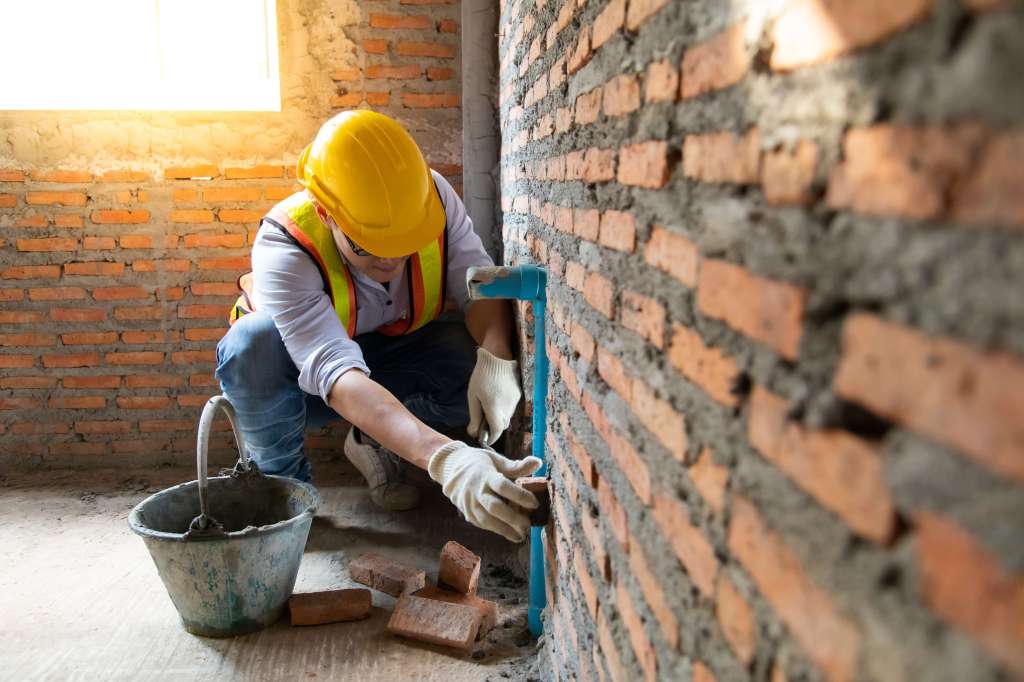The construction industry is playing an important role in the UK’s recovery from the Covid-19 pandemic as one of the economy’s fastest growing sectors.
This has led to builders experiencing the highest number of enquiries for 10 years in the first few months of 2021. However, increased demand and the ongoing impact of the pandemic is leading to rising costs and a shortage of materials.
Demand for building projects surges due to pandemic
Consumer demand for building projects has surged in recent months, according to recent research. The IHS Markit Construction Purchasing Managers’ Index found that British construction activity increased at the fastest rate in nearly seven years during May.
Meanwhile, the latest Trade Survey from the Federation of Master Builders (FMB) shows that builders saw enquiries rise at their fastest rate in 10 years. Compared to the final two months of 2020, the study also found that during the first quarter of this year:
- builders’ workloads, enquiries, and employment all grew
- 55 per cent of tradespeople in the repair, maintenance and improvement sectors saw workloads increase
- 70 per cent of FMB members reported increased enquiries
The rise in demand is thought to be related to people spending more time at home during the pandemic and, as a result, looking to make improvements.
With Covid restrictions set to ease further next month, and fewer people going on holiday abroad this summer, demand is likely to continue rising.
Access to materials and skills is becoming a problem
Although builders will be happy with a rise in demand, many are reporting skills shortages and issues accessing key supplies. The FMB report shows:
- 38 per cent are reporting bricklayer shortages, up from 22 per cent in the last quarter of 2020
- 34 per cent are struggling to hire carpenters/joiners, up from 23 per cent
- difficulties in hiring general labourers and plasterers, increasing by nine per cent and 10 per cent respectively
A separate report from the Construction Leadership Council (CLC) suggests a shortage of timber, steel and cement, as well as electrical components, plaster, plasterboard, concrete and paint.
Builders battling rising costs for key materials
On top of materials and skills shortages, tradespeople are dealing with sharply rising costs.
There were record surges in the price of timber, bricks and steel in May, according to IHS Markit. Meanwhile, CLC’s research shows price hikes of 10 per cent for things like chipboard, up to as high as 80 per cent for timber.
Official figures from the Department for Business, Energy and Industrial Strategy (BEIS) show the cost of materials rose 8.4 per cent for all construction work in April compared to a year ago – a monthly increase of 2.6 per cent.
Why are building projects being delayed?
The combination of a materials shortage and rising costs is having an impact on tradespeoples’ ability to service extremely high levels of demand.
It’s also been suggested that there’s not enough tradespeople to meet demand – with the BBC reporting a shortfall of 10,000 workers in Wales alone.
Alongside unprecedented demand, there is a variety of reasons for delays, supply shortages and rising building costs. These include:
- seasonal issues affecting production of materials
- rising shipping costs due to a shortage of empty containers
- Covid travel restrictions causing import delays and stretched supply chains
- Brexit impacting imports from Europe
How can builders navigate supply shortages and rising costs?
It’s important to keep up to date with the latest news so you can stay one step ahead of any changes that could affect your business.
For example, changes to Covid travel restrictions or Brexit could have an impact on the supply of materials.
Builders dealing with unprecedented demand could also benefit from reviewing their pool of subcontractors and supply chains. Are there any changes you could make which could reduce costs or speed things up?
Identifying vulnerabilities and considering risks at all times can help builders to take advantage of booming demand despite ongoing cost, resource, and supply challenges.
Stay on top of finances
Due to uncertain market conditions and situations changing quickly, it’s also important to manage your books effectively. Read our guides on budgeting, cash flow, invoices, and government support.
- How to budget: a budget calculator and guide for the self-employed
- What is a cash flow forecast? A guide for small businesses
- The best invoice apps for small businesses: 8 apps to make your life easier
- What is the Help to Grow scheme – and how do I apply?
What’s the impact of the Covid-19 pandemic on small businesses?
Our new report reveals the full impact of the pandemic on over 1,200 UK small business owners.
It tackles issues such as which regions have been hardest hit, the total anticipated cost of the pandemic, and whether small businesses have received enough government support.
Our survey of tradespeople earlier this year found that they expect total costs due to lockdown to reach £18,039 on average.
However, they were optimistic for a steady recovery thanks to the vaccine rollout and roadmap out of lockdown.
More useful guides
- What’s the impact of Covid-19 on small businesses?
- Here’s our 2021 reportCoronavirus loans: when do I have to pay them back?
- Self-employed mortgage: how to get a mortgage when self-employed
- How much is Statutory Sick Pay (SSP) and what is the SSP rate?
Are you experiencing unprecedented demand, a materials shortage and rising costs? Let us know in the comments below.
Sign up for our newsletter
Looking for the latest news and features to help you stay ahead? Sign up for our monthly newsletter and get the inside track on the issues that matter to you.
